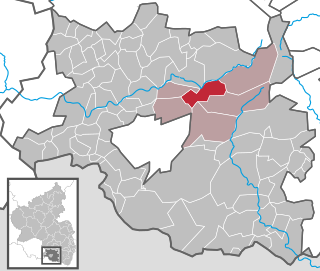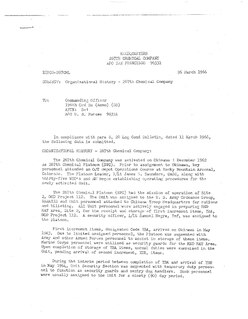
Johnston Atoll, also known as Kalama Atoll to Native Hawaiians, is an unincorporated territory of the United States, currently administered by the United States Fish and Wildlife Service (USFWS). Johnston Atoll is a National Wildlife Refuge and is closed to public entry. Limited access for management needs is only by Letter of Authorization from the U.S. Air Force and a Special Use Permit from the U.S. Fish and Wildlife Service.

VX is an extremely toxic synthetic chemical compound in the organophosphorus class, specifically, a thiophosphonate. In the class of nerve agents, it was developed for military use in chemical warfare after translation of earlier discoveries of organophosphate toxicity in pesticide research. In recent years, VX was found to be the agent used in the assassination of Kim Jong-nam. In its pure form, VX is an oily, relatively non-volatile, liquid that is amber-like in color. Because of its low volatility, VX persists in environments where it is dispersed.

A shell is a payload-carrying projectile that, as opposed to shot, contains an explosive or other filling, though modern usage sometimes includes large solid projectiles properly termed shot. Solid shot may contain a pyrotechnic compound if a tracer or spotting charge is used. Originally, it was called a "bombshell", but "shell" has come to be unambiguous in a military context.
The Newport Chemical Depot, previously known as the Wabash River Ordnance Works and the Newport Army Ammunition Plant, was a 6,990-acre (28.3 km2) bulk chemical storage and destruction facility that was operated by the United States Army. It is located near Newport, in west central Indiana, thirty-two miles north of Terre Haute. The site was used as a production site for the solid explosives trinitrotoluene and RDX, as well as for heavy water. It also served as the production site for all of the U.S. military's nerve agent VX, when it was in use. All VX nerve agent at the site was neutralized by August 8, 2008. It was the third of the Army's nine chemical depots to completely destroy its stockpile.

The Umatilla Chemical Depot, (UMCD) based in Umatilla, Oregon, was a U.S. Army installation in the United States that stored chemical weapons. The chemical weapons originally stored at the depot consisted of various live munitions and storage containers each holding 1 short ton GB or VX nerve agents or HD blister agent. All munitions had been safely destroyed by 2011 and base closure operations are expected to be completed by 2018, after several years of delays.

The United States Army Chemical Materials Activity (CMA) is a separate reporting activity of the United States Army Materiel Command (AMC). Its role is to enhance national security by securely storing the remaining U.S. chemical warfare materiel stockpiles, while protecting the work force, the public and the environment to the maximum extent.
Pine Bluff Chemical Activity is a subordinate organization of the United States Army Chemical Materials Agency located at Pine Bluff Arsenal in Pine Bluff, Arkansas. The U.S. Army stored approximately twelve percent of its original chemical weapons at the Pine Bluff Arsenal since 1942. Destruction of the last chemical weapons occurred on November 12, 2010.
Operation Red Hat was a U.S. military action taking place in 1971, which involved the movement of chemical warfare munitions from Okinawa, Japan to Johnston Atoll in the North Pacific Ocean.

Clausen is a municipality in Südwestpfalz district, in Rhineland-Palatinate, western Germany. Clausen belongs to the local association community of Rodalben.

Münchweiler an der Rodalb is a municipality in Südwestpfalz district, in Rhineland-Palatinate, Germany, and belongs to the municipal association of Rodalben. The primary industry of the village was that of a shoe manufacturer. It lies on Strasse B-10 between Karlsruhe and Pirmasens.

Johnston Atoll Chemical Agent Disposal System (JACADS) was the U.S. Army's first chemical munitions disposal facility. It was located on Johnston Island, at Johnston Atoll and completed its mission and ceased operation in 2000.

The M55 rocket was a chemical weapon developed by the United States in the 1950s. The United States Army produced both Sarin and VX unitary warheads for the M55.

Operation Steel Box, also known as Operation Golden Python, was a 1990 joint U.S.-West German operation which moved 100,000 U.S. chemical weapons from Germany to Johnston Atoll.

The MC-1 bomb was the first U.S. non-clustered air-dropped chemical munition. The 750-pound (340 kg) MC-1 was first produced in 1959 and carried the nerve agent sarin.
The M47 bomb was a chemical bomb designed during World War II for use by the U.S. Army Air Forces.
Throughout history, chemical weapons have been used as strategic weaponry to devastate the enemy in times of war. After the mass destruction created by WWI and WWII, chemical weapons have been considered to be inhumane by most nations, and governments and organizations have undertaken to locate and destroy existing chemical weapons. However, not all nations have been willing to cooperate with disclosing or demilitarizing their inventory of chemical weapons. Since the start of the worldwide efforts to destroy all existing chemical weapons, some nations and terrorist organizations have used and threatened the use of chemical weapons to leverage their position in conflict. Notable examples include the use of such weapons by Iraq’s Saddam Hussein on the Kurdish village Halabja in 1988 and their employment against civilian passengers of the Tokyo subway by Aum Shinrikyo in 1995. The efforts made by the United States and other chemical weapon destruction agencies intend to prevent such use, but this is a difficult and ongoing effort. Aside from the difficulties of cooperation and locating chemical weapons, the methods to destroy the weapons and to do this safely are also a challenge.
Operation Pacer Ivy was a 1972 operation of the U.S. Air Force that removed Agent Orange from South Vietnam and stored it on Johnston Atoll. IVY was presumably selected as an abbreviation of InVentorY. Operation Pacer HO refers to an associated program of the United States Department of Defense (DoD), dealing with the disposition of Agent Orange from Vietnam.

The 267th Chemical Company was a military unit of the U.S. Army Chemical Corps responsible for the surety of chemical warfare agents dubbed "RED HAT" deployed to the Islands of Okinawa, Japan and subsequently Johnston Atoll in the Pacific Ocean. A recently discovered Army document reveals that the true mission of the 267th Chemical Company was the operation of the Okinawa deployment site as part Project 112. Project 112 was a 1960s biological warfare field test program that was conducted by the Deseret Test Center. Okinawa is not listed as a test site under Project 112 by the U.S. Department of Defense.
The United States chemical weapons program began in 1917 during World War I with the creation of the U.S. Army's Gas Service Section and ended 73 years later in 1990 with the country's practical adoption of the Chemical Weapons Convention. Destruction of stockpiled chemical weapons began in 1985 and is still ongoing. The U.S. Army Medical Research Institute of Chemical Defense (USAMRICD), at Aberdeen Proving Ground, Maryland, continues to operate.













